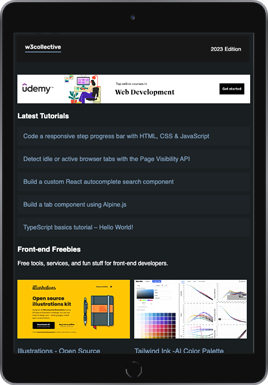In this tutorial I’ll run through the process involved in setting up a simple static website using Eleventy. If you’ve never heard of Eleventy it was created to be a JavaScript alternative to Jekyll with a focus on flexibility and perfomance.
Let’s get started by opening a terminal window and creating the directory for our project:
mkdir eleventy
cd eleventyEleventy requires a package.json file so let’s create one (defaults are ok):
npm init -yNow we can install Eleventy saving as dependency in the package.json:
npm install --save-dev @11ty/eleventyCode language: plaintext (plaintext)Next let’s create a layout file which will act as a wrapper for the content.
We’ll call the layout file layout.njk and save it to a folder named _includes:
---
title: Hello World
---
<!doctype html>
<html lang="en">
<head>
<meta charset="utf-8">
<meta name="viewport" content="width=device-width, initial-scale=1.0">
<title>{{ title }}</title>
</head>
<body>
{{ content | safe }}
</body>
</html>Code language: HTML, XML (xml)Eleventy supports a number of templating languages here we are using Nunjucks.
Next create an index.md file in the project’s root folder with the following markdown:
---
layout: layout.njk
title: Welcome to Eleventy
---
# {{ title }}
This is some content written in markdown.Code language: Markdown (markdown)We can now run Eleventy to compile the project and start up a hot-reloading local server:
npx @11ty/eleventy --serveCode language: CSS (css)This compiles an index.html file to the _site folder.
With the index page created let’s also create an “about” and “contact” page:
about.md
---
layout: layout.njk
title: About
---
# {{ title }}
This is the about page.Code language: Markdown (markdown)contact.md
---
layout: layout.njk
title: Contact
---
# {{ title }}
This is the contact page.Code language: Markdown (markdown)So we can navigate between the pages let’s add a menu to our layout.
Create a nav.js file and save it to a folder called _data with the following code:
module.exports = [
{label: "Home", url: "/",},
{label: "About", url: "/about",},
{label: "Contact", url: "/contact",},
];Code language: JavaScript (javascript)Then create a header.njk file in the _includes folder that’ll load the data from nav.js:
<nav>
<ul>
{% for item in nav %}
<li><a href="{{ item.url }}">{{ item.label }}</a></li>
{% endfor %}
</ul>
</nav>Code language: HTML, XML (xml)And finally include header.njk in layout.njk above the content:
{% include "header.njk" %}Code language: PHP (php)At this point you should have a fully functioning 3 page website with navigation.
Adding images & CSS
By default images and CSS don’t get copied to the _site folder. Because of this we’ll need to save all our CSS and images in a folder called assets. Then in a file named .eleventy.js we can tell Eleventy to copy the assets folder to the _site folder when run:
module.exports = function (eleventyConfig) {
eleventyConfig.addPassthroughCopy('assets');
};Code language: JavaScript (javascript)Now if you add a style.css file to assets/css it can be loaded into the <head> of layout.njk as follows:
<link rel="stylesheet" href="/assets/css/style.css" />Code language: HTML, XML (xml)Images saved to assets/img can be inserted into the markdown files as follows:
You should now have enough of an understanding to build a simple website with Eleventy. To see what Eleventy is capable of you can view a gallery of websites created using it here, we’ll also be publishing more Eleventy tutorials in the future here.




